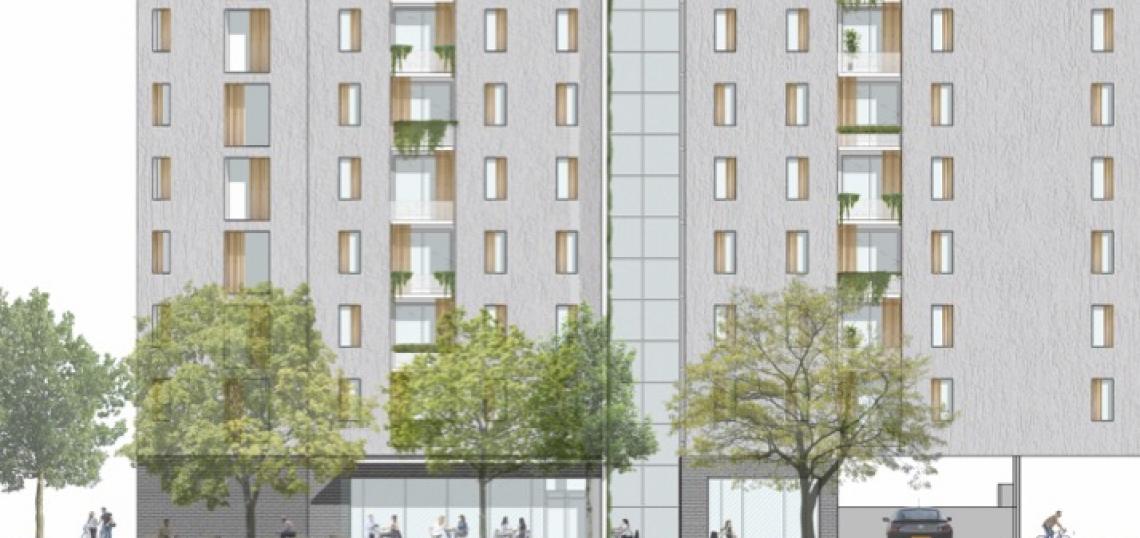A plan to redevelop prime downtown property with a new residential building that embraces multimodality is good to go, with the Austin City Council approving its rezoning 11-0 at a recent meeting.
Dubbed Shoal Cycle, the multifamily building will replace the site’s current offices with seven floors of residential units and 3,500 square feet of ground-floor retail space. Developer Weaver Buildings sought, and received, a change to Downtown Mixed Use zoning for the property at the City Council's August 26 meeting.
The rezoning comes with an allowed height increase—although limited to 60 feet rather than the originally requested 90 feet—therefore creating for more possible density. It also frees the development from parking requirements, which the design takes advantage of by incorporating underground parking with 58 vehicles for a total of 70 three-bedroom apartments. That's fewer parking spaces than would be required for a similar building in other parts of the city and, in combination with the increased height, makes more space available for residences.
Shoal Cycle's location will allow it to capitalize on its walkability, its access to the Shoal Creek Trail, and current and planned public transportation routes nearby to attract residents looking to reduce or eliminate their use of personal vehicles. The property will also include 70 bicycle parking spaces in the garage and more bicycle parking, as well as organized parking space and charging for scooters, in the right-of-way.
Scaling down the amount of car parking offered on the property will also make possible “rental rates accessible to service industry, creative class, office workers, and employees who work for publicly funded entities like the University of Texas, at the State Capitol Complex, and for the City of Austin,” said Weaver Buildings' Jen Weaver in April. Shoal Cycle’s rents will target affordability for people making around $55,000 annually.
Plans for Shoal Cycle include incorporating solar power and significantly lowering energy consumption by converting the building to low-voltage power. Other planned green-building features will include increased insulation in the building envelope, high-efficiency mechanical systems, water-saving devices, and awnings to allow natural lighting and prevent solar glare. The goal, says Weaver, is to create a "resilient building" that produces all of its energy onsite, to the extent that it is even "able to offer power and shelter on the ground floor in extreme weather events."
Weaver Buildings is partnering with Texas-based companies Studio8 architects, Pape-Dawson Engineers, Lott Brothers Construction Company, and Coleman and Associates landscape architects on the project.







